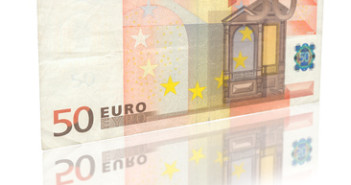EUR/USD surged after yesterday’s (January 10th) ECB meeting, in which the ECB voted unanimously to maintain interest rates at 0.75%. The pair climbed about two cents following the news. The euro was also bolstered by strong data out of France, as French Industrial Production beat market expectations. In the US, Unemployment Claims was a disappointment, as the key employment indicator failed to meet the estimate for the second straight reading. It looks to be a less dramatic day on Friday, with no releases out of the Eurozone. Today’s highlight is the US Trade Balance.Â
EUR/USD Technical
- Asian session: Euro/dollar settled down after Wednesday’s big gains, and the pair consolidated at 1.3262. The pair has edged higher in the European session.
- Current range: 1.3240 to 1.3290.
Further levels in both directions:Â Â 
- Below: 1.3240, 1.3170, 1.3130, 1.3110, 1,3030, 1.30, 1.2960, 1.2880, 1.28, 1.2750 and 1.2690.
- Above: 1.3290, 1.3350, 1.34, 1.3480, 1.3568 and 1.3627.
- 1.3240 is providing support. 1.3170 is stronger.Â
- On the upside, there is resistance at 1.3290. This line could be tested if the upward move continues.
Euro/dollar jumps following ECB rate decision – click on the graph to enlarge.
EUR/USD Fundamentals
- 13:30 US Trade Balance. Exp. -41.1B.
- 13:30 US Import Prices. Exp. 0.1%.
- 19:00 US Federal Budget Balance. Exp. -11.6B.
For more events and lines, see the EUR/USD
EUR/USD Sentiment
- Euro spikes after ECB rate decision: At its policy meeting on Thursday, the ECB maintained it benchmark interest rate at its current level of 0.75%. Although this move (or non-move) was widely expected, market sentiment rose after the announcement, for two reasons. First, the decision to stay the course was unanimous, and ECB President expressed his confidence in the Eurozone economy. Although growth in the zone is weak and unemployment is persistently high, the ECB decided not to change its interest rate policy in order to bolster the Eurozone. Second, there was no indication from the ECB that it might resort to slashing rates in the near future. In doing so, the ECB is sending a strong message to the markets that for the near future at least, it is likely to make do with unconventional monetary steps as it tries to help along the Eurozone economy.
- Eurozone greets 2013 with weak numbers: After the ECB policy meeting on Thursday, ECB President Draghi expressed confidence that the Eurozone economy will bounce back in about 2013. No doubt the markets share this sentiment, but the proof will be in the Eurozone pudding. Recent data continues to point to persistent weakness in the economy. After some disappointing PMI’s last week, unemployment continues to be a major headache, with the Italian unemployment rate down a notch to 11.1%, and the Eurozone rate stuck at 11.8%. Germany, the locomotive of Europe, continues to sputter, with three poor releases this past week. For any recovery to get on track, these kinds of numbers will have to improve. Otherwise, market sentiment will tumble, and likely take the euro with it.
- German data dismal: Early on in 2013, the once mighty German economy is showing signs of weakness. After some positive employment and retail sales numbers, this week’s data has been all downhill. The Trade Balance surplus dropped to its lowest levels since May, and German Factory Orders fell by 1.2%. There was no relief from German Industrial Production. Although the indicator managed to push into positive territory for the first time since September, the gain was a paltry 0.2%, well below the estimate of 1.1%. The weak numbers threaten to undermine confidence in the Eurozone’s largest economy. Chancellor Angela Merkel is seeking a third term in national elections in September, but she will have her work cut out for her if the German economy fails to improve.
- US Data Disappoints: There was more disappointing data out of the US on Thursday, as Unemployment Claims were released. The key employment indicator came in at 371 thousand news claims, well above the estimate of 361K. This marked the second straight reading in which the indicator failed to meet market expectations. Is the US recovery in trouble? There are worrying signs, with the staggering US debt still out of control, high unemployment and very weak consumer confidence.
- Congress braces for new battles: Last week, the markets breathed easier as the US dodged the fiscal cliff bullet, with no time remaining on the clock. Congress managed to craft together a compromise which all sides could agree to, albeit with some reluctance on both sides of the political divide. However, the story is by no means over, and this recent battle, which grabbed the news headlines for several weeks, appears to have just been the first round. More battles are imminent, as the hard-fought fiscal cliff deal left two critical issues – the debt ceiling and spending cuts, for another day.hard-fought fiscal cliff deal left two critical issues – the debt ceiling and spending cuts, for another day. If the debt ceiling is not raised, the result would be a default by the US government, which undoubtedly would cause chaos in the markets. Republicans have vowed to condition raising the debt ceiling on deep spending cuts, which the Democrats strongly oppose. In March, fiscal cliff could again rear its head, as $110 billion in spending cuts will kick in if Congress cannot agree on a new budget.



